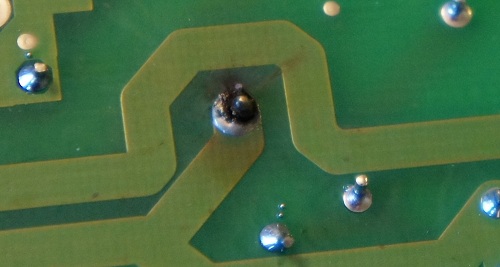The Ware for May 2012 was a BGA re-balling tool. I picked this one up in Hua Qian Bei for about 80 RMB (~US$12), including stencils, balls, and other accessories. The lady who sold it to me was even nice enough to give me a little training on reballing.
I first encountered this tool being used in a factory to re-ball GDDR5 memory. The factory produced a line of graphics cards, and the memory was being stripped from graphics cards where the GPU failed test and were deemed un-salvageable. Before seeing this, I was under the impression that reballing was an involved process, but with this jig the operator could strip and reball a chip in under a few minutes, which translates to a labor cost of a couple dozen cents. This also explains how so many cheap SoCs end up for sale in the gray market — most of them are extracted from used phones, reballed, and re-packaged into tape and reel and sold as new. Given that a legitimate, brand new reel of these chips has a fair market value equivalent to an entry-level automobile, it’s now easy for me to understand the profit motive behind such efforts.
zyp got the answer very quickly, and is the prize winner, but I’m also giving a second honorary prize to sanjay, for the most entertaining explanation of what BGA reballing is:
BGA is the Ball Gilders Association.
As the name implies, it is a trade association of Ball Gilders. If you have never heard of them before, it is because they cater to a very exclusive clientele comprising some of the most discerning billionaires on this planet (millionaires need not apply).
Gilded Balls are the ultimate bling for a young man in his prime, and guaranteed to make an impact on the exclusive young ladies in your life.
However, the downside is that sometimes a gentleman will awaken after a night of revelry, and find his balls have been stolen.
This is where the reballer comes in. We have an exclusive range of prosthetic balls made of Gutta Percha, which we will install (at no additional cost) for any of our esteemed clients who have been unfortunate enough to have their ball stolen by one of the despicable 99% we happen to (unfortunately) have to share this planet with.
That’s just hilarious. Congrats, email me for your prize.


